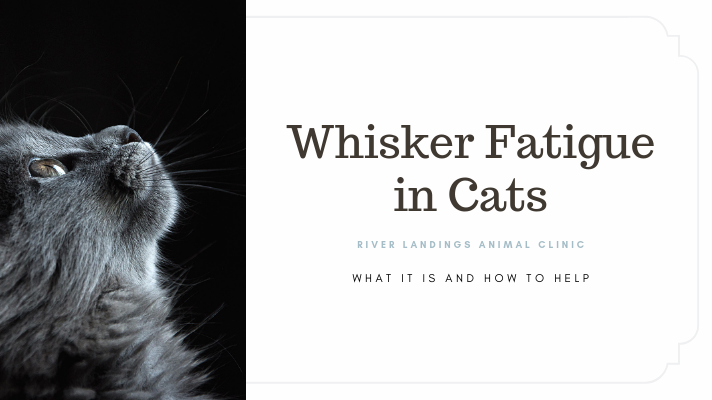If you've never heard of whisker fatigue, don't worry. It's not necessarily a widely known condition. But for some cats, it does negatively impact daily life.
Why do cats have whiskers?
Cat whiskers are extraordinary sensing hairs that give them almost extrasensory powers. Despite their evolution, whiskers (tactile hairs or vibrissae), have remained as features on most mammals in some basic form.
For cats, whiskers are much more than facial adornments that add to their cuteness. Whiskers act as high-powered antennae that pull signals into their brain and nervous system. The ultra-sensitive sensory organs at the base of the whiskers, called proprioceptors, tell your cat a lot about their world. They provide your cat with information regarding their own orientation in space and the what and where of their environment. In these ways, whiskers help your cat move around furniture in a dark room, hunt fast-moving prey (by sensing changes in air currents) and help to determine if they can squeeze into that incredibly tight spot between the bookcase and the wall.
So what exactly is whisker fatigue?
While cats can voluntarily “turn on” the sensory focus of their whiskers exactly where they want, whisker receptors mostly respond to a cat’s autonomic system — the sympathetic and parasympathetic nerves that respond to the internal and external environment without conscious control (for example—pupils constricting in response to bright light).
You can think of whisker fatigue as an information overload that stresses out your cat. Because whisker hairs are so sensitive, every time your cat comes into contact with an object or detects movement, even a small change in air current or a slight brush against their face, messages are transmitted from those sensory organs at the base of their whiskers to their brain. That barrage of “messages” could stress out your cat, eventually causing what some people call whisker fatigue.
However, “fatigue” may not be the best description of the condition, since what your cat is feeling is probably more like distaste or aversion than soreness or actual fatigue. In fact, whisker stress is another term some people use for the condition.
Not all feline vets think whisker fatigue is a real condition or cause for concern. Dr. Cathy Lund of City Kitty, a feline-only veterinary practice in Providence, R.I, questions the validity of whisker fatigue. While a cat’s whiskers do serve as very sensitive tactile sensors, she does not believe contact between whiskers and objects causes stress in cats. That said, stress, for whatever reason, is a real issue of concern for cat owners and vets.
What causes whisker fatigue?
While your cat relies on their fetching facial antennae to navigate the world, they can’t tune out unnecessary messages the way we filter out background noise. They inadvertently finds stimulation in the most common and ever-present situations, like at their food or water bowl. If their whiskers touch the sides of the bowl every time they dips their head to sip or eat, this can cause whisker fatigue, the theory suggests.
Your cat’s behavior at their food and water bowl will tip you off that they are stressed. Some signs to watch for include:
Pacing in front of the bowls
Being reluctant to eat but appearing to be hungry
Pawing at food and knocking it to the floor before eating
Acting aggressive toward other animals around food
Of course these behaviors can also be related to potentially serious health conditions like dental disease, oral tumors, gastrointestinal diseases, behavioral problems and more, so if you have any concerns about your cat’s well-being, you should make an appointment with your veterinarian.
Many vets, regardless of their opinions on whisker fatigue, agree that cats often find eating out of a bowl unappealing in general and providing a flat surface for meals is preferable.
Whisker fatigue is not a disease (and is not caused by or related to any type of illness) and appears to manifest primarily with the repeated daily contact with food and water bowls. However, a cat who is stressed is not happy, and if they avoid eating and drinking, they might become malnourished and/or dehydrated.
How can whisker fatigue be prevented?
Luckily, preventing or stopping stress related to whisker fatigue at feeding time is as easy as replacing your cat’s food and water bowls. At meal time, provide a flat surface or a wide-enough bowl for cat food so that their whiskers don't touch the sides of the bowl. In a pinch, a paper plate can serve as a suitable food dish.
Most cats prefer a lip-less, large flowing water source, for drinking. Ideally, cat parents should provide an automatic, fresh water source, like a cat water fountain, which cats prefer to an icky, stale bowl of water that might as well be from an old tire.
Some cat parents believe another solution is to trim their cats’ whiskers, but this is a giant no-no. Trimming whiskers mutes their expression, dims their perceptions, and in general, discombobulates cats and annoys them.
Hear From Us Again
Don't forget to subscribe to our email newsletter for more recipes, articles, and clinic updates delivered to your inbox (here). Or, you can keep up to date by liking and following our Facebook page (here).
Related: We have more information under our cat health category.







